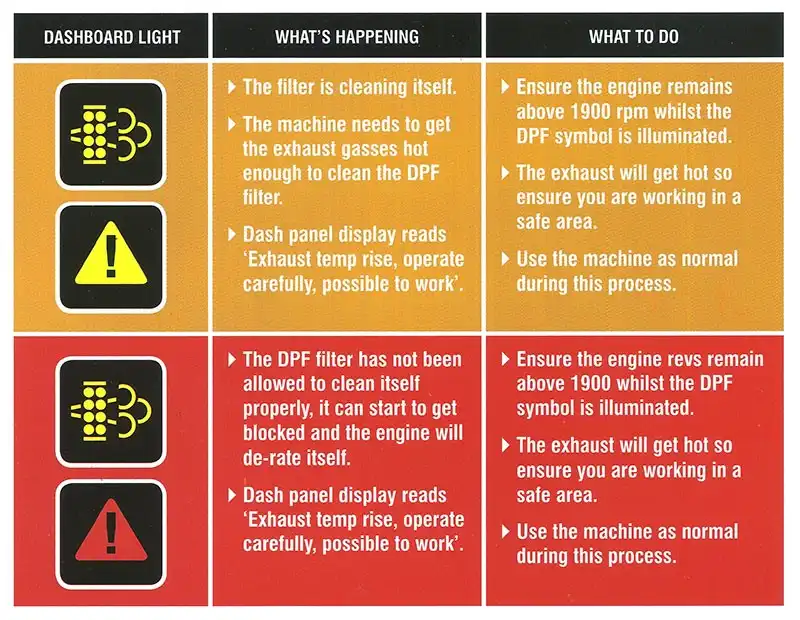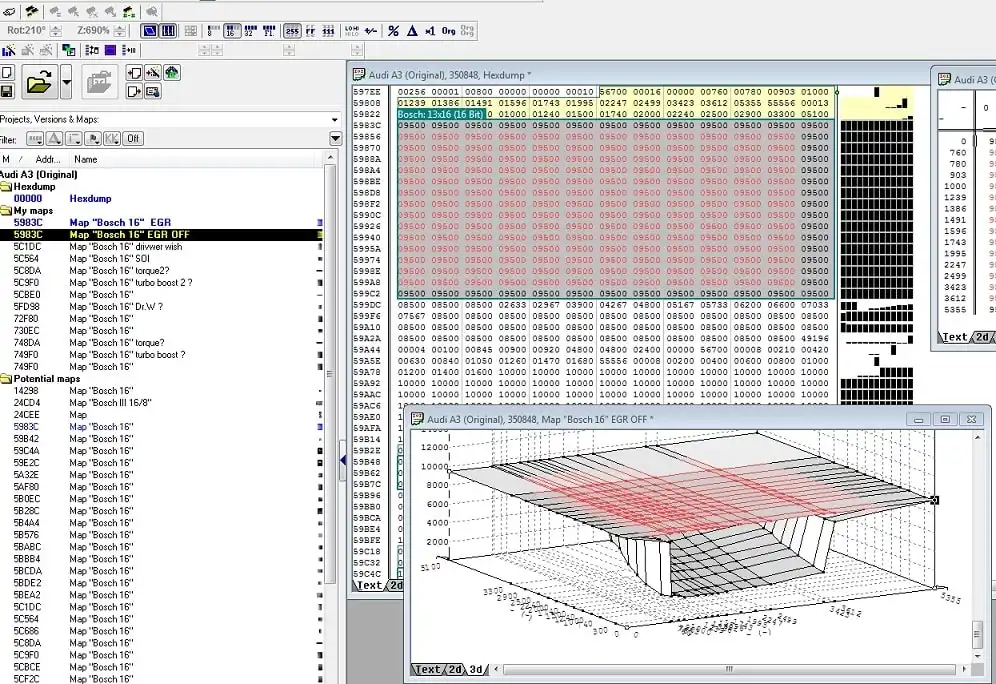🚩What you Read in This Article:
- What is the DPF system, and what is the purpose of a DPF system?
- How does a DPF system work?
- How does DPF reduce emissions?
- What is DPF Regeneration?
- Various types of DPF regeneration?
- Pros and Cons of removing the DPF system
- DPF System Removal Software
- DPF system Delete in ECU tutorial
Diesel Particulate Filter Technology (DPF):




- DPF is one of many technologies developed to reduce air pollution and improve the environmental conditions of the Earth with an exclusive share in the vehicle market. Many countries worldwide have passed laws in different years to make using this technology mandatory in most diesel-fueled vehicles worldwide (The use of DPF for road vehicles goes back to 1985 and, for other non-road cars, several years earlier.)
- The performance of the DPF system is based on the absorption of particulate matter (soot). Particulate matter produced by incomplete fuel-air combustion in the engine can contaminate the air. However, the DPF system prevents this contamination. DPF absorbs and accumulates soot particles and, ECU, if needed, when the volume of deposited soot is high, burns off the soot inside the filter by raising the exhaust temperature.
- However, the potential defect of the DPF system is observable when the vehicle has been in traffic and, thus, the engine runs with low RPM.
Causes of DPF Failure:
- DPF pressure sensor failure
- Poor performance tuning
- High mileage vehicle
- Oil passes through engine or turbo seals into the exhaust housing
- Faulty fuel injectors sending too much fuel to the Air/Fuel Mixture
- EGR valve problems
Under such scenarios, so much particulate matter can accumulate and clog the exhaust gas passage out of the engine. Of course, this is pre-defined in ECUs by which, if you are the owner of the vehicle, you can empty the DPF filter on highways and intercity roads (when the engine is running with higher RPM). This emptying is dependent on the model of the vehicle and its ECU. If your DPF is not disposable (requiring frequent replacement), it should be cleaned up after 30,000 kilometers (or about six months), as otherwise, you will experience a completely blocked DPF. However, regeneration should be done after every 5,000km, which is often taken care of automatically by the sensors after they check the pressure difference. Regeneration is conducted in three different types:
1- In the first type, which is also called passive, the main idea is that the vehicle is soot in the filter builds up and is discharged after traveling a certain distance with high engine load and RMP and the filter reaching a particular temperature. Clearly, this type of regeneration is mostly for non-traffic vehicles.
2- The second type of regeneration is known as active regeneration. In this type, the DPF does not reach the temperature needed to discharge the soot, resulting in a pressure difference in the DPF. At this time, ECU increases temperature and facilitates regeneration by injecting additional fuel.
3- The third type of regeneration, called manual regeneration, is performed on periodic device services in repair shops. The method is based on the orders given to the ECU by the Car scanner device to increase the temperature and melt the soot.
❗Now that we have learned about how regeneration works, we should learn the consequences ignoring regeneration might have:
DPF Failure Symptom:

• Engine power loss and intense increase in engine temperature
• The check lights turning on
• Sharp smell in the cockpit
• Reduction in MPG (which itself means increased fuel consumption)
• Poor throttle response
These are some of the consequences of not doing regeneration.
Importantly, you should know that the blue smoke coming out of your car while regeneration is probably due to burning gasoline while black smoke refers to a problem with your DPF (You possibly need to replace your vehicle’s DPF).
Oil consumption inside the engine and entering the DPF is another challenging factor that can have a drastically detrimental impact on engine performance, resulting in a performance loss or even engine failure. Besides, the high costs of DPF failure is another factor to consider.
All that we have mentioned so far stress the importance of proper DPF maintenance.
Various types of DPF Systems:

- Cordierite (Cordierite Wall Flow Filter)
- Ceramic (Ceramic Fiber Filter)
- Silicon Carbide (Silicon Carbide Wall Flow Filter)
These are the three most common DPF types used. Apart from the difference in price, the three models mainly differ in terms of the melting temperature and duct size. These differences ultimately have a direct impact on the final quality of the filter produced.
Although apart from the three filter models mentioned above, other products, such as metal fiber flow-through filters and paper filters, are available, cordierite filter is the most common filter product.
DPF OFF Software - DPF OFF Solution:
The problem that diesel car drivers have with their vehicles' DPF causes many of them to become confused and seek a solution to fix this problem. Perhaps the first solution that comes to mind is physical removal of the DPF, which we do not recommend as it has many disadvantages, including voiding the warranty and potential mechanical issues afterwards. The proposed method is software removal of the DPF, which permanently solves this problem.
Various software programs such as WinOLS, Swiftec, BitEdit, and RaceEvo are used for this purpose, but it is important to know that the software you use is important, but more importantly, the person who performs this task with the software, as it is necessary to correctly identify and accurately modify the relevant areas in the software.
DPF off solution is possible at CaracalTech, and you can upload your vehicle's file to our Tuning File Service. Please note that we provide this service with a 30-month warranty for you.
Pros of Removing The DPF System:

DPF Removal can:
1. Provide the car with more power and better acceleration.
2. Resolve the DPF error in the car once and for all.
3. Reduce the EGT (Exhaust Gas Temperature).
4. Increase Fuel Economy
5. Longer service life
6. improve throttle response
7. Also, keep in mind that removing DPF will also be a very economical decision that resolves the extra costs of DPF failure forever.
Moreover, the benefit of removing the DPF system in trucks and agricultural vehicles is obvious, as these vehicles are more prone to DPF failure due to their high working hours resulting in huge costs for the owners. Removing the DPF software is permanent and hassle-free, which is a great advantage that will rid you of DPF clogging and blockage and the related problems and costs.
Cons of Removing The DPF System:

Perhaps the most critical disadvantage of removing DPF is the increase in soot and particulate matter volume in the air. Besides, you will be more likely to be fined for removing DPF based on the regulations that governments pass for climate control.
🏁With years of experience in ECU calibration and remapping, we at CaracalTech can fully identify and tune DPF-related tables in all diesel ECUs. In CaracalTech, resetting DPF maps or DPF REMOVAL is possible using different techniques. Besides, CaracalTech offers DPF system performance full training courses incorporated in ECU so that only by a single piece of training you can identify and select DPF control tables in EMS or fully perform DPF Delete.
DPF Delete Cost By Remap?
DPF removal price differs from cars and in CaracalTech we can do it for you with the lowest price and we do our best with guarantee and support.
Here, you can learn once, fully and for good, the adjustments or removal of DPF in diesel engines. Here is a link to a DPF training video in various software's and ECUs.
1- If you want to learn how to delete DPF in diesel engines in WinOLS and Swiftec software, you can enter to our ECU training course.
2- If you need only DPF OFF file, upload original ECU file in Tuning File Service, after short time our experts send you remapped file.
3- If you know remapping software like WinOLS or ECM Titanium, for ease and accuracy of work you can use CaracalTech Mappack in the following link.
🚨NOTE: Most people are looking for EGR Off, DPF Off and SCR/ AdBlue Off training course but we must say for any ECU and any car EGR, DPF, AdBlue/SCR has a different algorithm, and it is not possible to find the same way and method for this work.
For example, if you want to find a turbo pressure map in EDC17 ECU, we can say that it has the same 2d, 3d, or text view in all EDC17 ECUs but EGR, DPF, AdBlue/SCR for any EDC17 ECUs is different.
So, what should we do? We need A2l files or Damos files for that especial ECU then try to find the EGR, DPF, AdBlue/SCR area in the file.
We use Swiftec software to do EGR, DPF, AdBlue/SCR OFF because it has some more working solutions.
You can see this link if you want to know some training examples.
DECAT:
One way to increase the performance of the engine is Decat.
DeCat or Delete catalyst, by definition, refers to removing the vehicle's catalyst. Why do we DeCat anyway?
It is obvious that obstacles, such as catalysts, reduce engine horsepower, but by using ways such as DeCat, these obstacles can be removed and engine performance is improved.
You can read the DeCAT article if you want to learn more about the advantages and disadvantages of Decat.
📍For more information and probable problems feel free to contact us: support@caracaltech.com
